Imprecation – Jehovah Denied
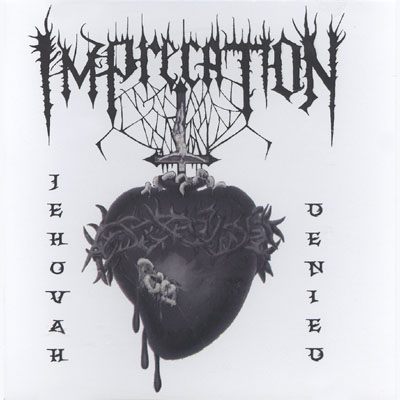 There is no “Houston sound,” but Houston bands are converging on a sound that is pure old school doom/death metal with a tendency to praise Satan. Part of it must come from living in the Bible Belt, surrounded by heavy refinery machinery and the incessant roaring of traffic. Another part may be that mythological hell is actually in Houston. Hell is described as a blazing hot place full of demonic beings, horrible stench and infernal rage. If you’ve ever driven on I-45 during a Friday afternoon…
There is no “Houston sound,” but Houston bands are converging on a sound that is pure old school doom/death metal with a tendency to praise Satan. Part of it must come from living in the Bible Belt, surrounded by heavy refinery machinery and the incessant roaring of traffic. Another part may be that mythological hell is actually in Houston. Hell is described as a blazing hot place full of demonic beings, horrible stench and infernal rage. If you’ve ever driven on I-45 during a Friday afternoon…
Much like spinoff bands Blaspherian and Morbus 666, and fellow old school death metal worshippers War Master, Imprecation makes violent death metal that is not especially fast so much as it is varied in dynamic and tempo. These songs approach like a vaporous ghost, then enclose the listener and then clench them into tight sequences of dark cadence. Simple power chord riffs fit together like an apocalyptic Jenga puzzle and bring the listener through labyrinthine contortions to a place of inner clarity and, quite honestly, Satanic hatred.
With its use of selected keyboards to highlight the evil of particular passages, and extensive variation in riff shape not only between songs but through the life of each song, this style of old school death metal fits best with bands like Infester or Sinister who bent simple but twisted riffs into a language of their own. Nonetheless, the release has a distinctive middle-of-the-United-States sound, with broad open spaces and lurching trudge rhythms that sound like malevolent demons summoned to battle. These songs are carefully layered, with voices and lead guitar complementing the underlying action, but with the Malevolent Creation-style (think “Multiple Stab Wounds” off The Ten Commandments) interplay between vocals and muted chording that lures you into a delirium of hypnosis.
Released on the 20th anniversary of the recording of the first Imprecation demo, “The Order of Nine Angles,” this four-song testament to brutality will convince even cynical observers that an unspeakable evil exists in Houston. Luckily it’s also a highly listenable evil that may represent not only this band’s most mature work yet, but their most inspired.
1 CommentMassacre drama continues
!!!!!! PLEASE READ THIS!!!!!
I’M NOT ONE TO GET CAUGHT UP IN DRAMA BUT I WANT PEOPLE TO SEE WHAT CHILDISH SHIT RICK AND I ARE DEALING WITH!!!
THIS WAS POSTED ON THE FORMER VOCALISTS FACEBOOK PAGE A FEW DAYS AGO….people need go and and give Butler and Rozz SHIT about it… they are the ones who desrve to get blastered with HATE MAIL… not me. Plus… you know… they are the one’s going to be touring soon… so now is your chance people… if you really feel that pissed off about them reforming with out me… NOW is the chance to go and let them know how you feel… go to show… and confront them… but – who am I kidding right… most people are too chicken shit to voice their opinions to people face to face. BUT- if you do have the balls to do it… PLEASE video tape it… and put it up on YOUTUBE. – Kam Lee
WHAT A COWARD,ASKING WHAT FANS YOU HAVE TO GO ON YOUTUBE AND BASH US…..CLASSIC – Terry Butler
I remain a Kam Lee fan. But after dishonorable dealings on his part, I’ll never have anything to do with him again. It’s not personal and if he wants, I will say it to his face. It’s also not acrimonious. I deal with professionals only.
No CommentsWinglord – The Chosen One
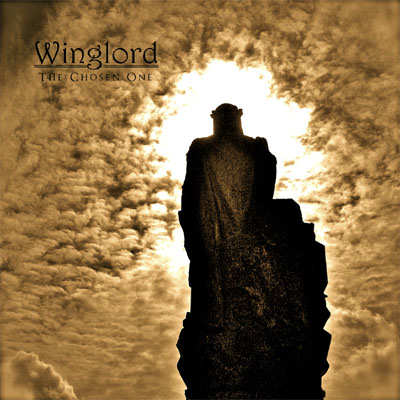 I am calling this new genre post-black-metal. It is the spirit and mood of black metal, the rhythms of 1980s EBM and industrial, the samples and collage technique of martial industrial, the atmosphere of neofolk, the sweeping epic point of view of soundtracks, and that sense of world music evoking the spirit of ancient tribalist folk songs from Europe that Dead Can Dance had going. Mix all this together, and you get a new genre which has a few members such as Kreuzweg Ost, later Burzum, Arcana, Lord Wind and even the Beherit ambient albums.
I am calling this new genre post-black-metal. It is the spirit and mood of black metal, the rhythms of 1980s EBM and industrial, the samples and collage technique of martial industrial, the atmosphere of neofolk, the sweeping epic point of view of soundtracks, and that sense of world music evoking the spirit of ancient tribalist folk songs from Europe that Dead Can Dance had going. Mix all this together, and you get a new genre which has a few members such as Kreuzweg Ost, later Burzum, Arcana, Lord Wind and even the Beherit ambient albums.
This is a natural progression for black metal. It admitted its 1970s synthpop and ambient cosmic music influences. Even more, it was influenced by Danzig’s Black Aria and other soundtracks like those from Vangelis and Basil Poledouris. Metal itself was influenced by the soundtracks to 1960s Italian horror cinema. Beherit put out two ambient albums, Burzum two, and Darkthrone released its Tangerine Dream tribute band Neptune Towers. Even Emperor released that keyboard version of “Inno a Satana,” and Ildjarn put out three ambient landscape music albums. It’s in black metal’s blood, and with the end of the innovation of the style itself in the mid-1990s, the bands turned to the next step. More instruments, longer songs, more modes, more complexity.
Rolling on the success of bands such as Blood Axis and Lord Wind, the newest entry into this field is Winglord, a Scandinavian produce that hopes to rebirth the ancient spirit of Europe through synth-piano music. As mentioned above, it’s poppy like old Ministry or VNV Nation, but it has more musicality going on, like a Dead Can Dance track. It’s easy to listen to and yet melancholy, yet brings forth a message of not “small hopes” in the way modern music is “uplifting” but does nothing about the larger crisis of living in an insane and dying society, but instead shows us a way we can conquer the disease of this time. First in our hearts, then in our minds, then with our hands. It’s inspiration not through external forces, but through a sense of power, which is where it is most like black metal.
These tracks are built on a foundation of martial industrial and industrial dance (EBM). Verse-chorus loops are broken by interludes; layers extend melodies with different conclusions and beginnings. Melodies themselves, in a manner much like the way Summoning expands its riffs into soundtrack-style phrases, unfurl from lush keyboard layers into linear variation which then outlines the themes of each songs. It’s highly organized however which makes the entire listening experience a controlled, evocative process.
The Chosen One is a huge improvement over earlier Winglord, and shows us one future for this genre. It doesn’t aspire at all to the trends and individualistic ego-drama of the modern time. Instead, it creates for us a vista of a land outside of time, in which eternal values obliterate all of our temporal concerns, and lets us get lost and swept up in this majestic wave of power. For those who like good music, and want to see some new motion in the underground, this is a vital and impressive undertaking to be enjoyed.
Winglord
The Chosen One
Arktos, 2012, 43 minutes, $17.
Deeds of Flesh – Portal to Canaan
Winglord – soundtrack neofolk ambient synthpop
I don’t even know what to categorize this music as, but it’s equal parts soundtrack (Basil Poledouris, Vangelis, Ennio Morricone), neofolk (Hekate, Arcana), ambient (Kraftwerk, Tangerine Dream) and synthpop (VNV Nation). The result is epic keyboard music that fills the soul with a sense of ancient glory. The best known example is Lord Wind, but others have touched on this idea in the past and slowly a movement is building around it.
The latest attempt, sound like like VNV Nation crossed with Vangelis, is Winglord:
Check them out at the official Winglord site.
No CommentsImprecation – Jehovah Denied released
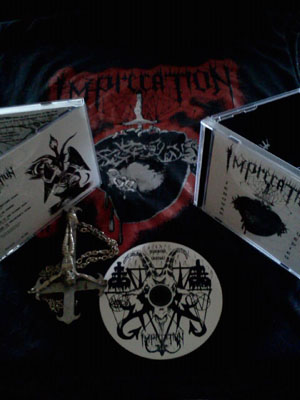 New IMPRECATION “JEHOVAH DENIED” now available through the band. 4 rites of pure blackened DEATH metal, strictly limited to 100 copies. This demo was recorded to mark the 20th year of the “Ceremony of the Nine Angles” demo release. The shirts are $15 plus postage. $9 USD (domestic) or $12 (international) gets the CD. This price includes the postage. Paypal at: slimelord666 -at- hotmail.com
New IMPRECATION “JEHOVAH DENIED” now available through the band. 4 rites of pure blackened DEATH metal, strictly limited to 100 copies. This demo was recorded to mark the 20th year of the “Ceremony of the Nine Angles” demo release. The shirts are $15 plus postage. $9 USD (domestic) or $12 (international) gets the CD. This price includes the postage. Paypal at: slimelord666 -at- hotmail.com
Eric Hoffman to sodomize Glen Benton and Steve Asheim
The Deicide decomposition continues:
Let be known I am going to fix Steve Ashamed’s nose like he always wanted, fuck boy. As far as Glen Benton you wannabe tommy lee, that looks like he swallowed the Hoffmans, have not paid us in 7 years. You must not have rememberd what happend to you when you stole my money last time. I have more towels to soak up your fucking head, you piece of shit. So shoot me and ask questions later, like you said. You got hierd in DEICIDE from me, and steal my shit scumbag. I cant wait to see you 2 again. – StalkFace
Whatever happens, everybody on earth wins if you guys start making more material like the first three Deicide albums. That’s a goal worth overcoming a lot for. It’s also your chance at a type of immortality most people can only dream of.
No CommentsTags: Deicide, eric hoffman, facebook, Glen Benton, internet drama, sodomy, steve asheim
Beherit – Celebrate the Dead
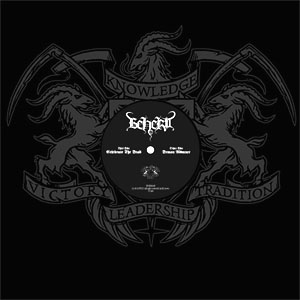 Legendary cerebral primitive black metal cabal Beherit are on the move again. The new release, Celebrate the Dead, involves one song from the epic 2009 release Engram, and one song assembled from material prepared for that album. While information on it is scarce, rumor has it we see Beherit continuing the direction toward an ambient/metal fusion.
Legendary cerebral primitive black metal cabal Beherit are on the move again. The new release, Celebrate the Dead, involves one song from the epic 2009 release Engram, and one song assembled from material prepared for that album. While information on it is scarce, rumor has it we see Beherit continuing the direction toward an ambient/metal fusion.
1. Demon Advance (13:13)
2. Celebrate The Dead (16:18)
According to Holocausto, who was harassed by DLA operatives earlier this week, this KVLT release is an exact copy of a demo he recorded himself in July 2008 in Helsinki and Bangkok. This demo was sent to Spinefarm records, who then agreed to release what became Engram. KVLT wanted to release the demo, and since Holocausto felt the demo versions were better than the final studio production, even though the drums on the demo were sampled, he agreed to this vinyl-only release.
- Beherit – Celebrate the Dead 12″ (Primitive Reaction)
- Beherit – Celebrate the Dead 12″ (Kvlt)
Help finish Birth A.D.’s debut album!
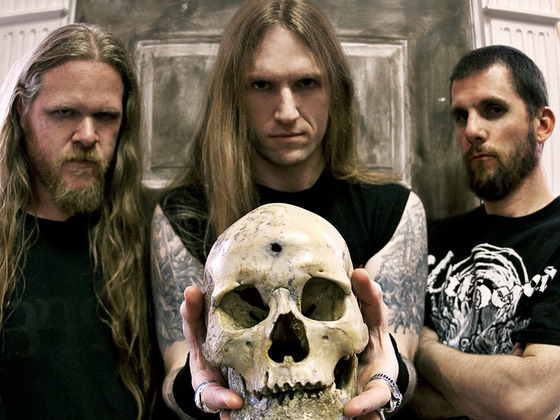
Birth A.D. is in the final stages of producing their debut full-length, “I Blame You”, and they need your help! A good independent production isn’t cheap, so anything you contribute to assist in the mixing and mastering process of this soon-to-be classic of crossover thrash is appreciated.
Your donation will be commemorated with the inclusion of your name on the album’s thanks list, and you will be counted as part of the new Birth A.D. fan club, the Seven Billion Graves Brigade.
The Misfits had the Fiend Club, Voivod has the Iron Gang, and this is your chance to get your name immortalized as a collaborator and conspirator! Years from now when the band is huge, overrated, and not half as cool as when they started off, you can break out the album everyone really liked and say, “There’s my name!”
Pledge now, and CAUSE PROBLEMS!
No Comments
